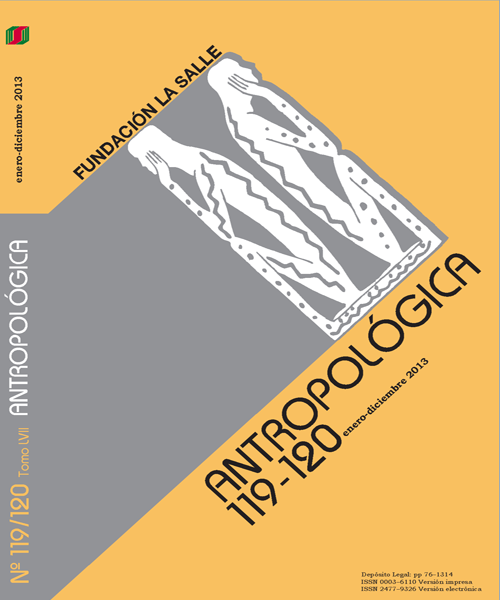Afroindianidad y mestizaje en resistencia. Los Aripaeños, descendientes de cimarrones en el Bajo Caura, Venezuela
Palabras clave:
Afroindianidad, mestizaje en resistencia, cimarronaje, identidad política, Venezuela, Afroindigenousness, Resistant Mestizaje, Maroons, Political IdentityResumen
Resumen. La conformación de alianzas sociales, políticas, económicas y/o religiosas a nivel inter-étnico fue una estrategia asumida por las poblaciones esclavizadas de origen africano en la América, con el fin de asegurar su reproducción física y supervivencia cultural, mientras se resistían a la dominación colonial. A partir de estas alianzas inter-étnicas surge el “mestizaje en resistencia”, un mecanismo cultural que, dependiendo de sus localidades socio-históricas como esclavizados, le permitió a los africanos y sus descendientes forjar y (re)producir nuevas y diversas culturas afrodescendientes, con identidades propias, como producto de la etnogénesis. “Mestizaje en resistencia” constituye el soporte de los procesos de etnogénesis de las poblaciones
afrodescendientes; un ejemplo de esto es la afroindianidad -o la (re)creación de comunidades afroindígenas. En este artículo exploramos el significado de la afroindianidad y su vigencia histórica para las comunidades afrodescendientes. Se utiliza como eje central etnográfico la comunidad cimarrona de Aripao, Municipio Sucre, Estado Bolívar, Venezuela, en comparación con otras realidades etnográficas de América, que permitan ampliar y dilucidar el sentido profundo de la resistencia inscrita en la afroindianidad y lo inédito de la constitución de las identidades políticas a través de una reinterpretación del mestizaje, en este caso, como mecanismo de resistencia.
Afroindigenousness and Resistant mestizaje. The Aripaenos,
descendants of maroons of the Low Caura, Venezuela
-newline"> Abstract. The making of social, political, economic and/or religious inter-ethnic
alliances was one of the strategies that enslaved Africans and their descendants in the
Americas assumed to ensure their physical reproduction and cultural survival, while
resisting colonial domination. From these inter-ethnic alliances emerges “resistant
mestizaje”, a cultural mechanism that, depending of the socio-historical contexts in
which they were slaves, permitted the Africans and their descendants to forge and
(re)produce new and diverse afrodescendant cultures, with their own identities, as a
product of ethnogenesis. “Resistant mestizaje” thus becomes the basis of ethnogenesis
processes among afrodescendant populations; one example of this is afroindigenousness-or the (re)creation of afroindigenous communities. In this article we explore the meaning of afroindigenousness and its historical validity among black communities by focusing on the Aripaeños, who are maroon descendants, living in Aripao, Bolívar State, Venezuela, and comparing them with other ethnographic realities in the Americas. The aim is to expand and elucidate the deep meaning of afroindigenousness as a process of ethnogenesis as well as the constitution of identity politics through a reinterpretation of mestizaje, in this case, as a mechanism of cultural resistance.

